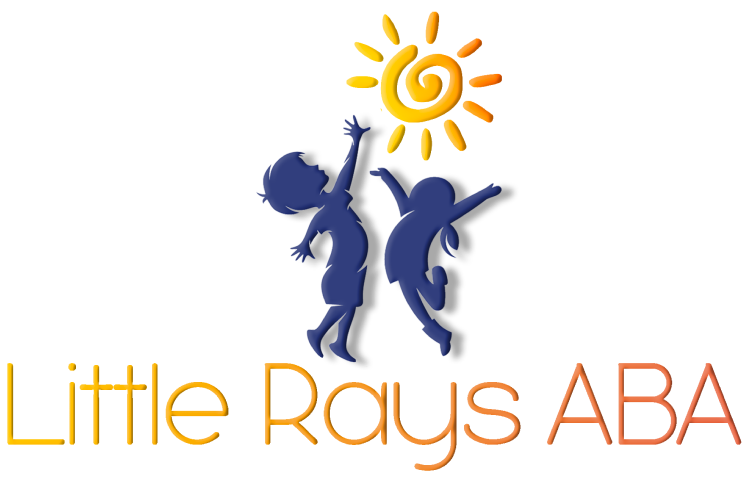Understanding Autism and ADHD
Before diving into the complexities of autism and ADHD, it’s crucial to get a general understanding of both conditions. Each presents unique characteristics and challenges.
Autism Spectrum Overview
Autism Spectrum Disorder (ASD) is a complex neurodevelopmental condition that affects communication, behavior, and social interactions. ASD can manifest differently in each individual, ranging from mild to severe. The Centers for Disease Control and Prevention (CDC) reports that around 1 in 59 children in the United States has received an ASD diagnosis, with males being five times more likely to develop autism than females.
Key Signs and Symptoms:
- Difficulties with social communication and interaction
- Restricted and repetitive behaviors or interests
- Sensory sensitivities
Early detection is important. Autism is typically recognized before a child reaches 3 years of age. It’s a neurobiological condition where social skills may not develop as expected, ranging from severe impairment to children who barely interact with others to extroverted autistic children who struggle getting along with peers their age.
For more detailed symptoms check autism vs ADHD symptoms.
ADHD Spectrum Overview
Attention Deficit Hyperactivity Disorder (ADHD) is another neurodevelopmental disorder, primarily characterized by inattention, hyperactivity, and impulsivity. Unlike autism, ADHD can be identified at a slightly older age, typically when the child enters school and struggles with classroom expectations.
Key Signs and Symptoms:
- Inattention: Difficulty focusing, following instructions, or completing tasks
- Hyperactivity: Excessive movement, fidgeting, or talking
- Impulsivity: Hasty actions without thought, interrupting others, or difficulty waiting their turn
Between 30 and 50% of individuals diagnosed with ASD exhibit elevated levels of ADHD symptoms. Furthermore, it is estimated that features of ASD are present in approximately two-thirds of individuals with ADHD.
| Disorder | Prevalence | Age of Detection | Key Symptoms |
|---|---|---|---|
| Autism | 1 in 59 | Before Age 3 | Social communication difficulties, repetitive behaviors, sensory sensitivities |
| ADHD | Variable | School Age |
Understanding these base characteristics helps in distinguishing as well as recognizing the overlap between autism and ADHD. To delve deeper into the similarities and differences, refer to our article on ADHD and autism spectrum disorder.
For additional information on the nuances between these conditions, see autism and ADHD differences and autism ADHD similarities.
Key Similarities and Differences
Diagnosis Criteria for Autism and ADHD
The diagnostic criteria for Autism Spectrum Disorder (ASD) and Attention Deficit/Hyperactivity Disorder (ADHD) differ substantially, but there are some overlapping features. Below is a comparison of the key diagnostic criteria according to the DSM-5:
| Criteria | Autism Spectrum Disorder (ASD) | Attention Deficit/Hyperactivity Disorder (ADHD) |
|---|---|---|
| Core Symptoms | Social communication difficulties, restricted interests, and repetitive behaviors | Inattention, hyperactivity, and impulsivity |
| Age of Onset | Symptoms typically evident in early childhood, before the age of 3 | Symptoms must be present before age 12 |
| Diagnosis Requirement | Persistent deficits in social communication and social interaction, across multiple contexts; restricted, repetitive patterns of behavior, interests, or activities | Six or more symptoms of inattention; six or more symptoms of hyperactivity and impulsivity, both must persist for at least 6 months |
| Impairment Criteria | Significant impairment in social, occupational, or other important areas of functioning | Evident in two or more settings, such as home, school, or work; significant impact on social, academic, or occupational activities |
Comorbidity Statistics
The comorbidity between ASD and ADHD is significant due to the overlapping symptoms and genetic factors. Prior to 2013, it was not possible for a dual diagnosis of autism and ADHD to be made. However, current understanding acknowledges that many individuals meet the criteria for both disorders simultaneously.
| Statistic | Percentage (%) |
|---|---|
| Children with ADHD also having Autism Spectrum Disorder | 14% (CDC), 15-25% (Other Research) |
| Children with Autism who also have ADHD | 40% |
| Individuals with ASD showing elevated ADHD symptoms | 30%-50% |
| Features of ASD in individuals with ADHD | ~66% |
| Comorbidity of ADHD in individuals with ASD | 50%-70% |
These statistics underscore the importance of thorough and accurate diagnosis, as the prevalence rates vary widely. Understanding these comorbidities is crucial for developing effective treatment plans.
Behavioral and Genetic Factors
Heritability of Autism and ADHD
Autism Spectrum Disorder (ASD) and Attention Deficit Hyperactivity Disorder (ADHD) exhibit significant heritability, indicating strong genetic influences in both conditions. Research consistently shows high heritability rates for ADHD, ranging from 77% to 88% across various studies. Twin studies, a common method for assessing heritability, reveal ADHD's mean heritability is approximately 74%. This suggests that genetics plays a substantial role in the development of ADHD.
For autism, genetics also plays a critical role. There are genetic correlations between ADHD and ASD, with findings indicating a genetic overlap above 0.50. This significant genetic overlap underscores a shared genetic influence between the two disorders. Genetic links are evident in the pattern of comorbidity between autism and ADHD, highlighted by associations across relatives diagnosed with either of the conditions.
| Disorder | Heritability Rate (%) |
|---|---|
| ADHD | 77 - 88 |
| Autism | Above 50 (genetic correlation with ADHD) |
Behavioral Traits and Overlap
The behavioral traits of ADHD and autism show both unique characteristics and significant overlap, particularly in areas of attention and social interaction. ADHD is commonly marked by symptoms such as inattention, hyperactivity, and impulsivity, while autism is characterized by deficits in social interaction, communication difficulties, and repetitive behaviors.
Research indicates that individuals with ADHD often have lower levels of brain arousal in frontal areas, a trait that can also affect those with autism. This points to a potential shared genetic or neurological link between the two conditions.
Moreover, the highest genetic correlation observed between the two disorders is between hyperactivity/impulsivity (HI) and repetitive and restricted behaviors (RRB) in individuals with both ADHD and autism. This reflects the behavioral overlap and shared genetic factors contributing to both conditions.
Research also shows that both ASD and ADHD are characterized by unique attention processing traits. Studies implicate distinct abnormal cognitive profiles, indicative of unique yet interrelated genetic underpinnings for their attention deficits. Despite these shared traits, it is crucial to recognize the distinct features and behavioral manifestations of each disorder.
| Behavioral Traits | ADHD | Autism | Overlap |
|---|---|---|---|
| Inattention | ✔ | ✖ | ✔ |
| Hyperactivity/Impulsivity | ✔ | ✖ | ✔ |
| Social Interaction Deficits | ✖ | ✔ | ✔ |
| Repetitive Behaviors | ✔ | ✔ | ✔ |
Understanding the heritability and behavioral overlap between ADHD and autism is essential for accurate diagnosis and effective management of these conditions. Recognizing the genetic correlations can guide therapeutic strategies and improve outcomes for individuals with comorbid autism and ADHD.
Early Detection and Diagnosis
Understanding the early signs and symptoms of Autism and ADHD is crucial for timely intervention and support. This section delves into the key indicators that can help differentiate between the two neurodevelopmental disorders.
Signs and Symptoms of Autism in Children
Autism is often detected earlier in a child's life than ADHD, with signs sometimes appearing as early as six months old. However, medical professionals generally wait until the child is at least 18 months old before attempting a diagnosis.
Children with Autism may demonstrate the following symptoms:
- Social Challenges: Difficulty engaging with others, avoiding eye contact, limited interest in interacting with peers, and challenges in responding to social cues.
- Communication Challenges: Delayed language development, limited speech, repetitive speech patterns, and difficulty understanding nuanced language like humor or sarcasm.
- Behavioral Traits: Repetitive behaviors such as hand-flapping, strict adherence to routines, resistance to change, and heightened sensitivity to sensory input like light, sound, and textures.
| Sign/Symptom | Description |
|---|---|
| Social Challenges | Difficulties with eye contact, limited interactions with peers |
| Communication Challenges | Delayed language, repetitive speech patterns |
| Behavioral Traits | Repetitive behaviors, sensory sensitivities |
Signs and Symptoms of ADHD in Children
ADHD tends to be diagnosed at an older age compared to Autism, often after a child starts school and the requirements for sustained attention and organization become more demanding.
Children with ADHD may exhibit the following symptoms:
- Attention Challenges: Difficulty sustaining attention, being easily distracted, missing details, and struggling to complete tasks.
- Hyperactivity and Impulsivity: Being overly talkative, fidgeting, interrupting others, difficulty remaining seated, and acting without thinking.
- Communication Issues: Losing track of conversations, straying off-topic, interrupting others frequently, but generally understanding the pragmatic part of language.
| Sign/Symptom | Description |
|---|---|
| Attention Challenges | Easily distracted, difficulty completing tasks |
| Hyperactivity and Impulsivity | Overly talkative, fidgeting, interrupting |
| Communication Issues | Straying off-topic, interrupting, tracking conversations |
Understanding the signs and symptoms of both Autism and ADHD is essential for appropriate and timely diagnosis. By recognizing these early indicators, caregivers and healthcare professionals can provide the necessary support and interventions that can significantly improve a child's developmental trajectory.
Treatment Approaches
Addressing the needs of individuals on the ADHD or autism spectrum involves multiple strategies, tailored to reduce symptoms and improve overall quality of life. Here, we explore therapeutic approaches and medication options for these intersecting conditions.
Therapeutic Strategies for Autism and ADHD
Support for autism and ADHD can encompass various forms of behavioral therapy, parent training, and educational support. The key is to create a tailored plan that addresses the unique needs of each individual.
| Therapy Type | Autism | ADHD | Both Conditions |
|---|---|---|---|
| ABA Therapy | Yes | Yes | Significant Benefits |
| Behavioral Therapy | Yes | Yes | Underexplored for Both |
| Parent Training | Yes | Yes | Effective for Both |
| Social Skills Training | Yes | Yes | Beneficial |
- Applied Behavior Analysis (ABA) Therapy: Renowned for its effectiveness in individuals with autism, ABA therapy also offers significant benefits for those with ADHD. The therapy focuses on understanding individual behaviors, implementing strategies to encourage positive behavior, and reducing harmful or disruptive behaviors.
- Behavioral Therapy and Parent Training: Psychosocial interventions such as behavioral therapy and parent training are fundamental in treating both ADHD and autism spectrum disorder. These interventions can help manage symptoms, improve social skills, and provide strategies for coping with daily challenges.
- Social Skills Training: Social skills programs are vital for improving interactions and mitigating social challenges, which are common in both autism and ADHD. This training helps individuals build communication and interaction skills.
Medication and Therapy Options
Medications are often used in conjunction with therapeutic strategies to manage symptoms effectively. The choice of medication can vary based on individual needs and co-occurring symptoms of ADHD and ASD.
- Psychostimulant Medications: Commonly prescribed for ADHD, these medications can reduce core symptoms but may show lower response rates in cases of co-occurring ADHD and ASD.
- Atomoxetine: A nonstimulant medication, Atomoxetine has shown better tolerability than psychostimulants, especially in individuals with both ADHD and ASD. It is effective in reducing hyperactivity and impulsivity.
- Guanfacine: An alpha-2 adrenergic agonist, guanfacine has also been beneficial for children with ADHD and ASD, helping to manage symptoms effectively.
Combining different therapies and medicines allows for a personalized treatment plan, helping individuals with autism and ADHD navigate their world more effectively.
Impact on Social Functioning
Social Challenges in Autism and ADHD
Individuals with either autism spectrum disorder (ASD) or attention-deficit/hyperactivity disorder (ADHD) often experience significant social challenges. These difficulties can manifest in various ways and are deeply rooted in the behavioral and cognitive traits of each condition.
Autism Spectrum Disorder (ASD)
Children with autism may display social, communication, and behavior challenges as early as six months old. These can include delayed language skills, repetitive behaviors, and sensory challenges. Social impairments are pervasive, with deficits in social communication and interaction being core symptoms. Children may struggle with understanding social cues, forming relationships, and engaging in reciprocal social interactions.
Attention-Deficit/Hyperactivity Disorder (ADHD)
Children with ADHD can also experience social impairments, often due to difficulties in emotion regulation. Emotional dysregulation can lead to challenges in forming and maintaining social relationships, resulting in social rejection or isolation.
Overlapping Challenges
Both autism and ADHD involve social impairments due to emotion regulation difficulties, which predict social impairment in both clinical and neurotypical populations. Interventions targeting inattentive symptoms, social communication symptoms, and emotion regulation skills may be most effective in reducing these social challenges.
| Condition | Common Social Challenges |
|---|---|
| ASD | Delayed language skills, repetitive behaviors, sensitivity to sensory stimuli, difficulty understanding social cues |
| ADHD | Emotional dysregulation, impulsivity, difficulty maintaining focus in social interactions, potential social rejection |
Improving Social Interactions
Improving social interactions for individuals with autism or ADHD requires tailored interventions and strategies.
Strategies for Autism Spectrum Disorder (ASD)
For children with autism, behavior therapy is a beneficial first step. This therapy involves one-on-one sessions tailored to the child's specific social and communication challenges. Key strategies include:
- Social Skills Training: Structured interventions to teach specific social behaviors.
- Speech and Language Therapy: To improve communication skills.
- Sensory Integration Therapy: To manage sensory processing issues.
Strategies for Attention-Deficit/Hyperactivity Disorder (ADHD)
For children with ADHD, strategies to improve social interactions focus on managing inattentiveness and emotional regulation:
- Cognitive Behavioral Therapy (CBT): Helps manage impulsive behaviors and emotional regulation.
- Social Skills Groups: Peer-based therapy sessions to practice and enhance social interactions.
Shared Strategies
Interventions that target both ADHD and autism can include:
- Emotion Regulation Training: To help children recognize and manage their emotions.
- Parent Training Programs: To support parents in managing their child's social interaction difficulties.
These approaches aim to create an environment where children with autism and ADHD can thrive socially, improving overall quality of life.
Final Thoughts
Understanding the differences and overlaps between autism and ADHD is key to providing the right support for individuals with these conditions. Early detection, accurate diagnosis, and tailored therapeutic approaches can make a significant impact on a child’s development and quality of life.
At Little Rays ABA, we specialize in evidence-based ABA therapy to help children build essential skills and reach their full potential. Contact us today to learn how we can support your child’s unique needs!
Sources:
- https://www.psychiatry.org/psychiatrists/practice/dsm
- https://www.medicalnewstoday.com/articles/325618
- https://www.specialstrong.com/the-best-therapy-for-adhd-and-autism-a-comprehensive-guide/
- https://pmc.ncbi.nlm.nih.gov/articles/PMC3441928/
- https://pmc.ncbi.nlm.nih.gov/articles/PMC8918663/
- https://www.ncbi.nlm.nih.gov/pmc/articles/PMC6477889/
- https://www.webmd.com/add-adhd/childhood-adhd/adhd-tests-making-assessment
- https://www.additudemag.com/autism-and-adhd/?srsltid=AfmBOoq19B4qfktEGOjFaRAO4w9JIiHMGotxc7FFqgd-d4-igacdDu_F
Unlock Your Child's Potential with Expert ABA Therapy!
At Little Rays ABA, we provide compassionate, evidence-based ABA therapy to help children with autism thrive. Our personalized approach fosters growth in communication, social skills, and independence.
Get In Touch With Us Today to Get Started With ABA Therapy!
Related Posts
MENU
GET IN TOUCH
7117 San Salvador Dr Boca Raton, FL 33433
3200 Collins Ave Miami Beach, FL 33140



